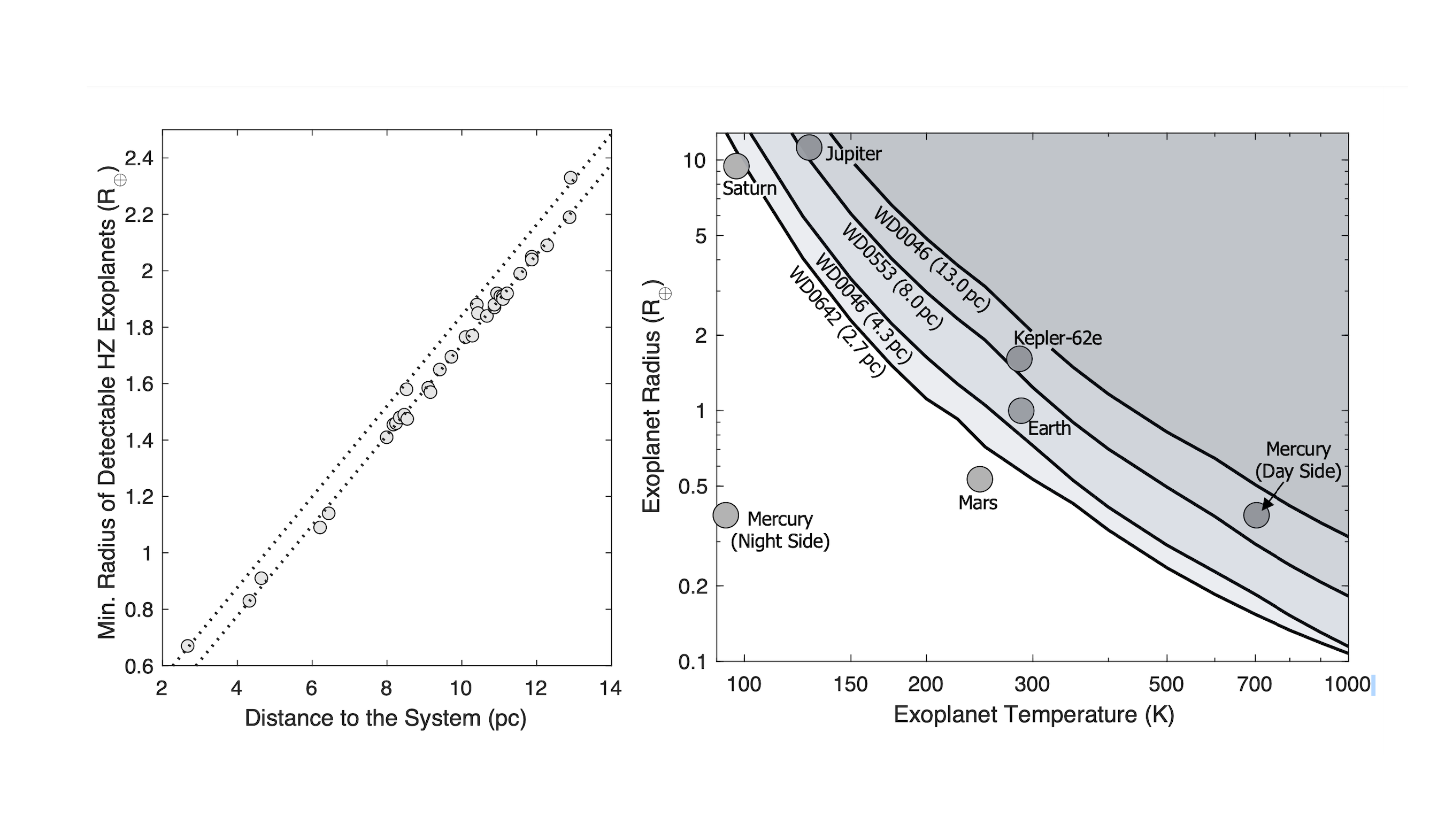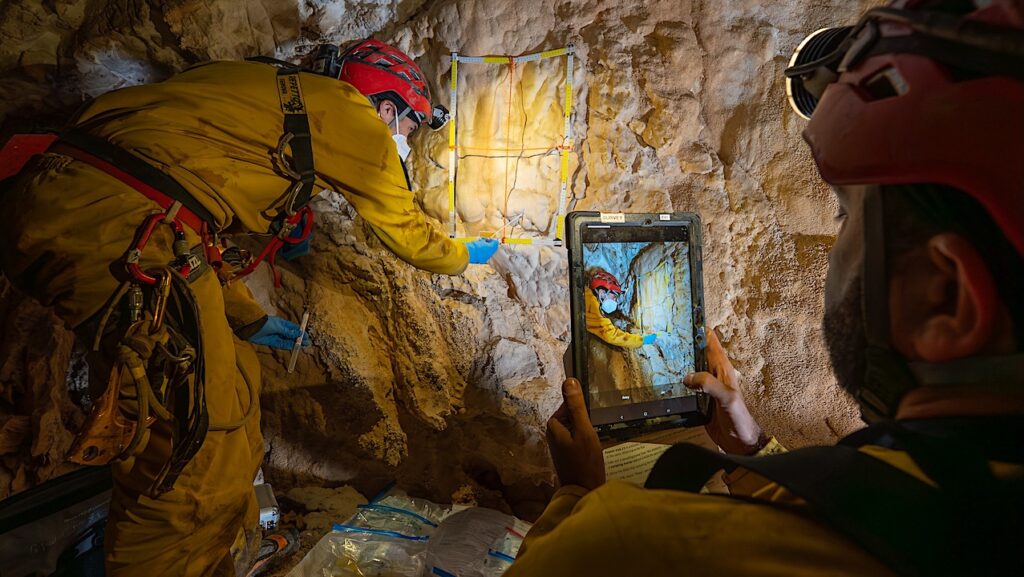A New Method for Finding Nearby White Dwarf Exoplanets and Detecting Biosignatures

We demonstrate that the James Webb Space Telescope (JWST) can detect infrared (IR) excess from the blended light spectral energy distribution of spatially unresolved terrestrial exoplanets orbiting nearby white dwarfs.
We find that JWST is capable of detecting warm (habitable-zone; Teq=287 K) Earths or super-Earths and hot (400-1000 K) Mercury analogs in the blended light spectrum around the nearest 15 isolated white dwarfs with 10 hrs of integration per target using MIRI’s Medium Resolution Spectrograph (MRS). Further, these observations constrain the presence of a CO2-dominated atmosphere on these planets.
The technique is nearly insensitive to system inclination, and thus observation of even a small sample of white dwarfs could place strong limits on the occurrence rates of warm terrestrial exoplanets around white dwarfs in the solar neighborhood. We find that JWST can also detect exceptionally cold (100-150 K) Jupiter-sized exoplanets via MIRI broadband imaging at λ=21μm for the 34 nearest (<13 pc) solitary white dwarfs with 2 hrs of integration time per target.
Using IR excess to detect thermal variations with orbital phase or spectral absorption features within the atmosphere, both of which are possible with long-baseline MRS observations, would confirm candidates as actual exoplanets. Assuming an Earth-like atmospheric composition, we find that the detection of the biosignature pair O3+CH4 is possible for all habitable-zone Earths (within 6.5 pc; six white dwarf systems) or super-Earths (within 10 pc; 17 systems) orbiting white dwarfs with only 5-36 hrs of integration using MIRI’s Low Resolution Spectrometer (LRS).
Mary Anne Limbach, Andrew Vanderburg, Kevin B. Stevenson, Simon Blouin, Caroline Morley, Jacob Lustig-Yaeger, Melinda Soares-Furtado, Markus Janson
Comments: Accepted to MNRAS
Subjects: Earth and Planetary Astrophysics (astro-ph.EP); Instrumentation and Methods for Astrophysics (astro-ph.IM); Solar and Stellar Astrophysics (astro-ph.SR)
Cite as: arXiv:2209.12914 [astro-ph.EP] (or arXiv:2209.12914v1 [astro-ph.EP] for this version)
https://doi.org/10.48550/arXiv.2209.12914
Focus to learn more
Submission history
From: Mary Anne Limbach
[v1] Mon, 26 Sep 2022 18:00:09 UTC (5,349 KB)
https://arxiv.org/abs/2209.12914
Astrobiology








